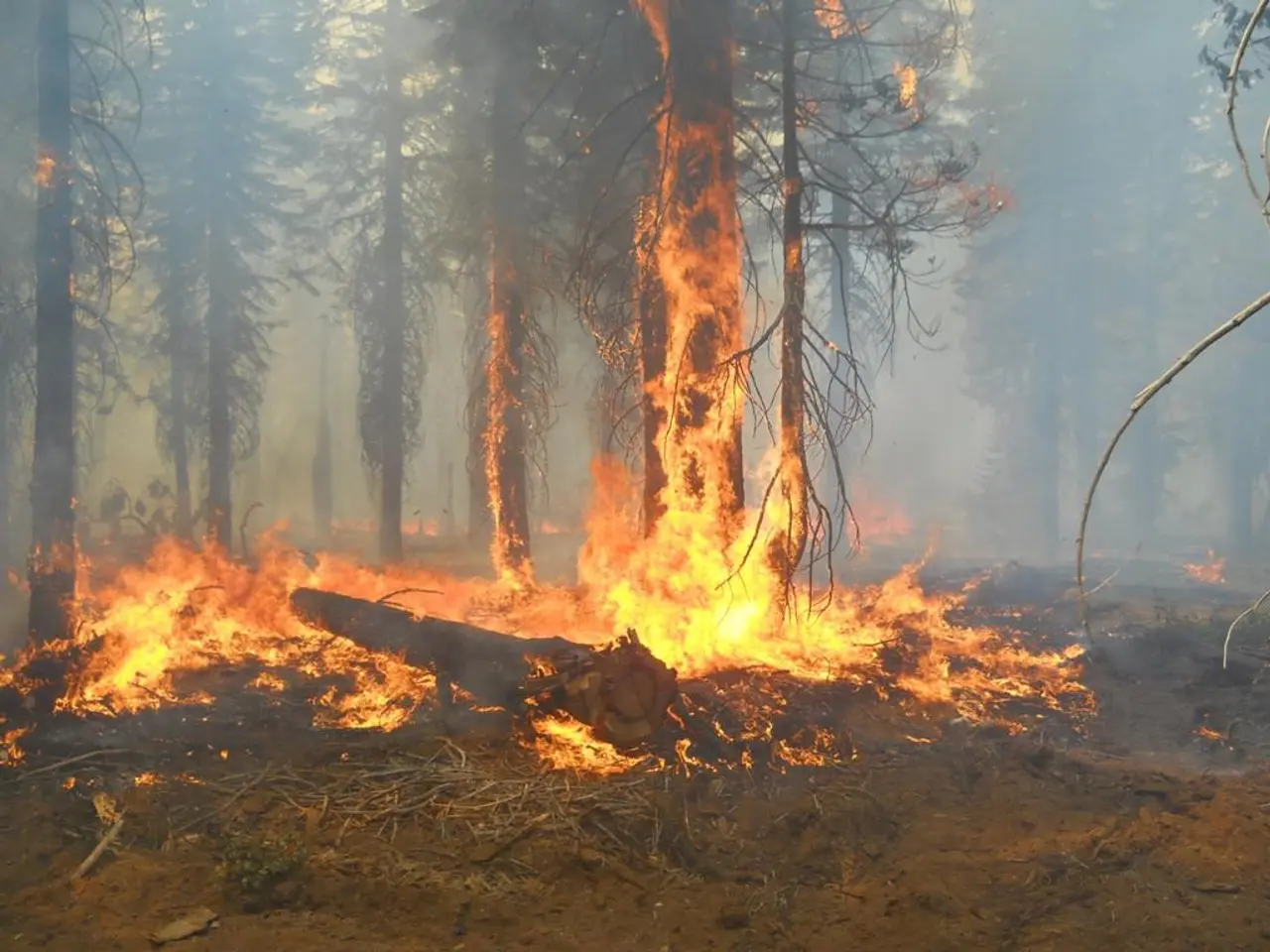Forest fires almost entirely quelled in Tomsk region, leaving only a handful unattended
In the Tomsk region of Russia, the ongoing forest fire season has seen a significant number of blazes since its typical start in late April. Despite this, the latest data indicates that the majority of these fires have been swiftly extinguished.
According to recent reports, out of 229 forest fires that have occurred, an impressive 193 have been successfully put out within 24 hours of detection. This high extinguishment rate suggests effective firefighting efforts and adherence to safety measures.
The current fire danger class in the Tomsk region stands at 1.2, indicating a low fire danger. This is largely due to the seasonal pattern that influences the fire season in Russia, with dry weather and accumulated summer heat contributing significantly to wildfire outbreaks.
However, despite the progress made in extinguishing fires, the exact number of active fires in the Tomsk region as of August 20, 2025, remains unclear. Satellite imagery and monitoring efforts have shown extensive fire activity over thousands of hectares in various parts of Russia, including large smoke plumes affecting air quality in other regions. This suggests ongoing fire challenges, although a specific count for the Tomsk region has not been provided.
The causes of these forest fires have not been definitively identified in the available data. Thunderstorms are known to have sparked 130 of the forest fires in the Tomsk region, while 97 were due to violations of fire safety rules by the population. Interestingly, only two of the 130 forest fires were from fire spread from linear objects.
In conclusion, while the Tomsk region is currently experiencing a period of low fire danger, the ongoing forest fires in Siberia, including the Tomsk region, are primarily influenced by the typical seasonal pattern in Russia. The exact number of active fires in the Tomsk region remains unclear, but the high rate of extinguishment within 24 hours is a promising sign of effective firefighting efforts.
Environmental scientists monitoring the Tomsk region have been tracking the impact of ongoing forest fires on the local weather. The data collected so far indicates that the fires have contributed to occasional changes in regional wind patterns and temperature fluctuations, particularly during periods of intense fire activity. This underscores the critical interplay between environmental-science factors and weather patterns during wildfire events. Moreover, the ongoing fires in Siberia continue to pose air quality concerns not only for the Tomsk region but for neighboring areas as well, due to the prevalence of large smoke plumes in the atmosphere.







